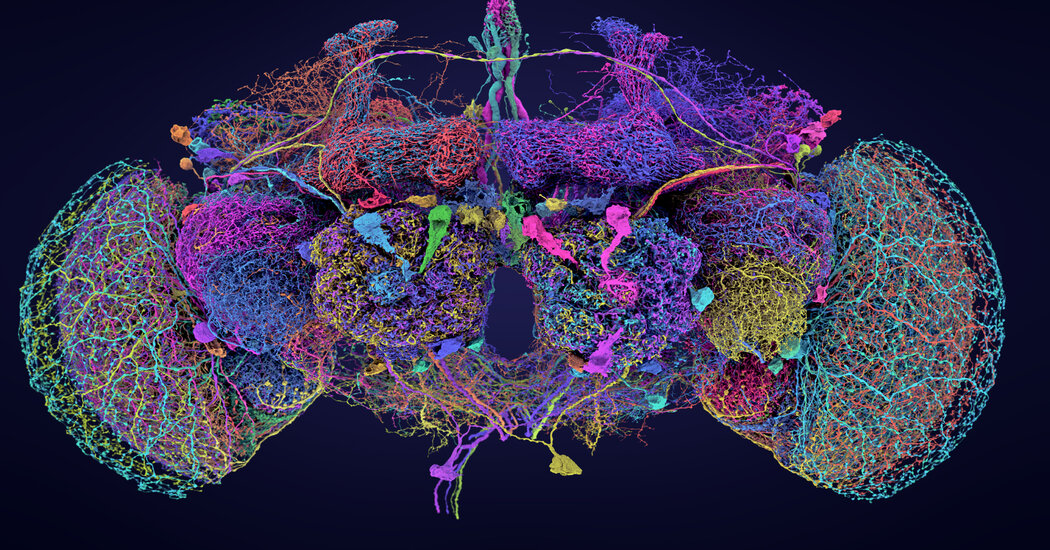Scientists have mapped out how 140,000 neurons are wired in the brain of the fruit fly, Drosophila melanogaster.
A fruit fly’s brain is smaller than a poppy seed, but it packs tremendous complexity into that tiny space. Over 140,000 neurons are joined together by more than 490 feet of wiring, as long as four blue whales placed end to end.
Hundreds of scientists mapped out those connections in stunning detail in a series of papers published on Wednesday in the journal Nature. The wiring diagram will be a boon to researchers who have studied the nervous system of the fly species, Drosophila melanogaster, for generations.
Previously, a tiny worm was the only adult animal to have had its brain entirely reconstructed, with just 385 neurons in its entire nervous system. The new fly map is “the first time we’ve had a complete map of any complex brain,” said Mala Murthy, a neurobiologist at Princeton who helped lead the effort.
Other researchers said that analyzing the circuitry in the fly brain would reveal principles that apply to other species, including humans, whose brains have 86 billion neurons.
In one of the new studies, the researchers tackled the mystery of how sensory signals flow through the brain and prompt it to produce commands. They created a computer simulation of the complete fly brain. When presented with simulated tastes, the artificial brain produced signals to stick out the tongue.
Sebastian Seung, another leader of the project at Princeton, said the simulations reminded him of long-running speculations about how “mind uploading” could allow us to transfer our brains into computers.
